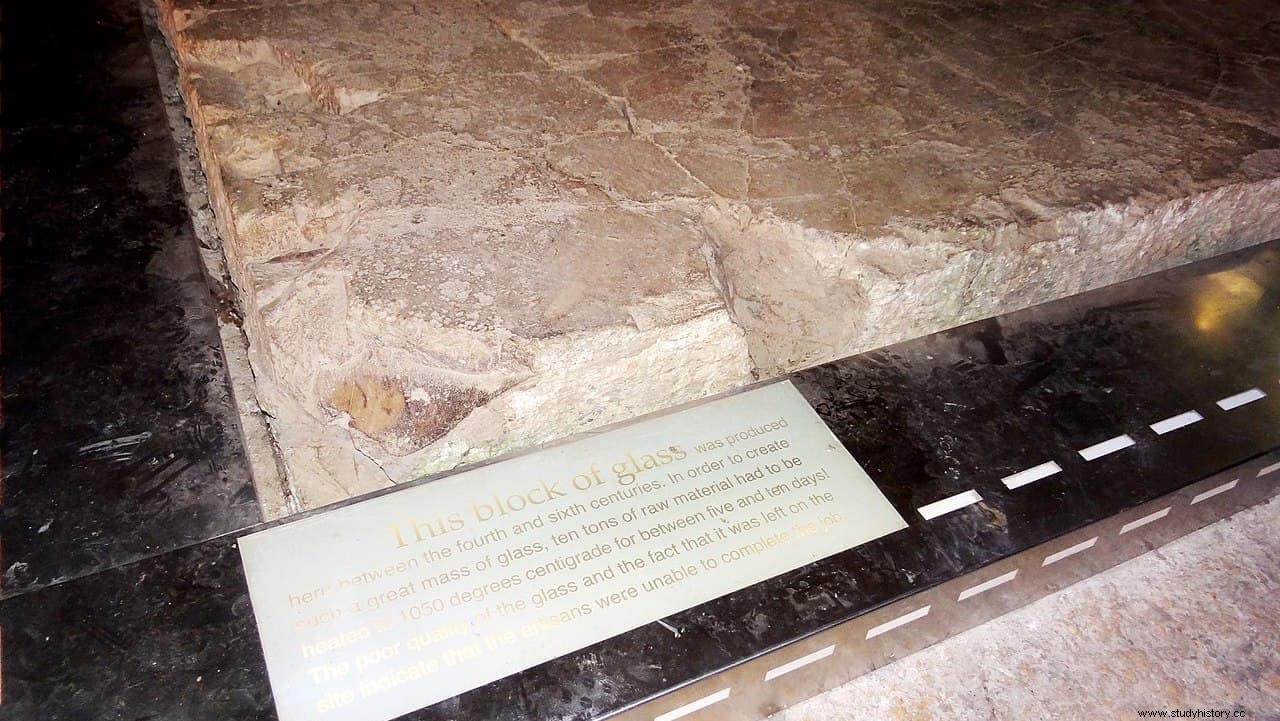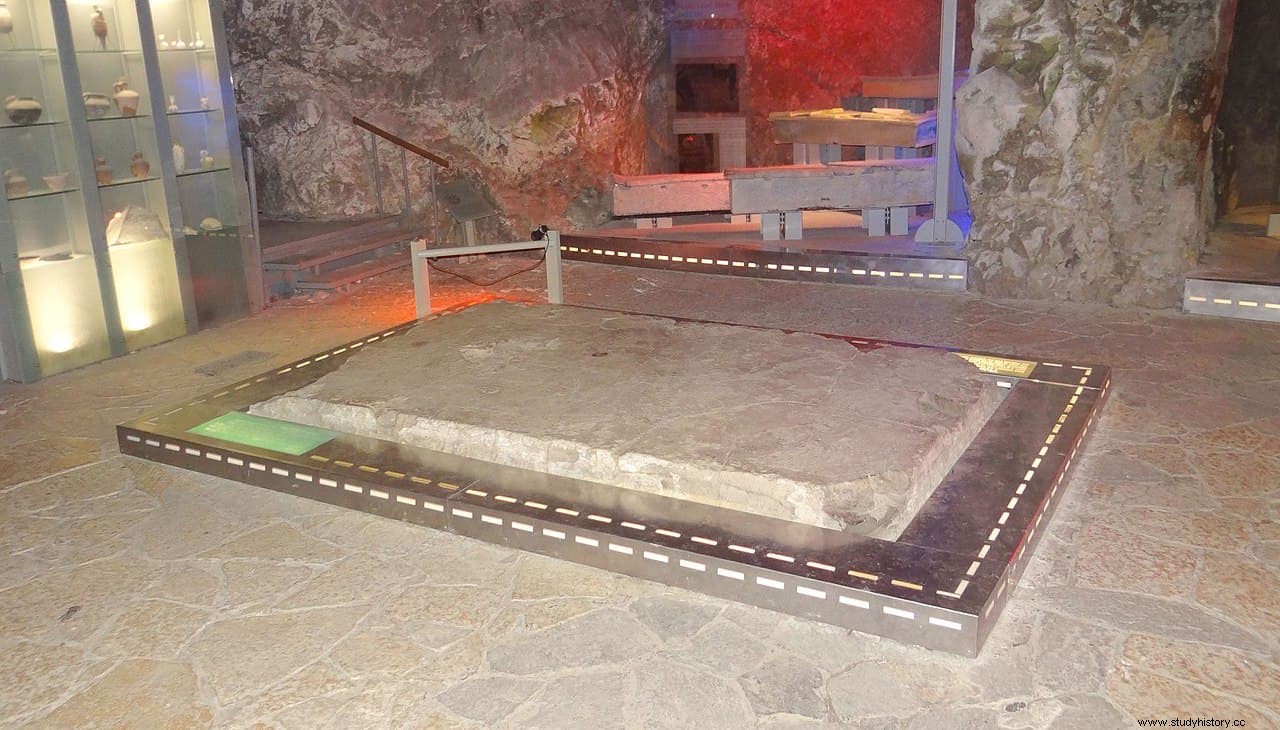In a cave adjacent to an ancient cemetery near Beit She'arim, an ancient Jewish city in northern Israel, lies a huge slab of glass approximately 2 meters wide, 3 and a half meters long and 45 centimeters thick.
It weighs 9 tons. Although chemical analyzes confirm that it is glass, the slab bears no resemblance to the delicate translucent material. It looks more like a large block of limestone, as it is completely opaque and bluish-gray in color.
When the slab was discovered in the 1960s during an exploration of the cave, workers thought it was concrete. An attempt was made to dislodge the slab, but it was too heavy for the bulldozer. So it was left where it was and the surrounding area was paved over, as a museum was being built inside the cave.

In 1963, members of a joint expedition from the Corning Museum of Glass and the University of Missouri were surveying the region for possible remains of ancient glassworks, when someone suggested that the Beit She'arim slab might be glass. . A piece of the slab was cut and sent to laboratories for analysis. The results surprised everyone, including the researchers themselves. The slab was indeed glass and was 1,600 years old.
Human beings have been making glass for 6,000 years, much longer than iron tools. The earliest glass objects, mostly beads, were made from glass created accidentally as a byproduct of metalworking or during the production of faience or earthenware, a ceramic-like material.
These early glasses were rarely transparent and often contained impurities and imperfections. True glass did not appear until the fifteenth century BC. in the region surrounding present-day Lebanon, the coast of northern Syria, Mesopotamia, and Egypt.

During Roman times, this region of the Mediterranean became the center of glassmaking due to the easy availability of raw materials, such as sand and soda ash. Glass was made in workshops in large blocks, which were then transported to different workplaces throughout the Roman Empire and, later, Byzantium, where craftsmen would reheat glass blocks to soften and blow them into all kinds of shapes. of objects.
Glassmaking was a difficult process because the ingredients used to make it often contained impurities, which were not easy to measure, but their presence changed the nature of the glass. For example, the main component of glass is silica or sand, which also contains some alumina and about 8% lime. Lime is desirable because it is that magic ingredient that prevents molten sand from crystallizing, resulting in a clear, nearly colorless, amorphous solid we call glass. However, if too much lime is added, it loses its magical property, causing the molten sand to crystallize into millions of microscopic structures and the resulting glass to lose its transparency. The glass slab from Beit She'arim is an example of that failure.
Why did the Beit She’arim glass slab fail?
In Beit She'arim, glass was made in a tank made from limestone blocks. The interior dimension of this tank was 2 meters by 3 and a half and its height was slightly more than 45 centimeters. The tank was filled with about 11 tons of raw material and heated to 1100°C. This temperature was kept almost constant for 5 to 10 days to allow all the materials in the tank to melt. This required up to 20 tons of fuel.

Since the tank was incredibly heavy and made of limestone, the heat was not applied from below but from above. There are signs of strong combustion next to the slab, so archaeologists know where the fireboxes were located. The tank was covered by a plaster arch, so that the flames were reflected on top of the mixture. A core drilled into the slab showed that the glass was homogeneous from top to bottom, down to a few centimeters from the bottom on the tank floor, where there were partially reacted ingredients that had not completely melted.
At the bottom there was some of the original mix, which looks like coffee grounds. Apparently the heat hadn't penetrated all the way through, so the slab was essentially half-baked. In addition, some of the limestone, or plastered arch over the reservoir, had disintegrated from the heat and fallen into the molten mixture, raising the lime content of the glass to twice the recommended figure of 8%. The result was a block of solidified silica.

Consequently, the glass was never broken to be used in the manufacture of containers and objects. If the glass had been perfect, between 50 and 60 thousand small vessels could have been made with it.
The piece of glass is still there, where it was discovered, on the floor of the cave that now serves as the museum's visitor center.
This article was published in Amusing Planet. Translated from English and published with permission.
Fonts
The Mystery Slab Of Beit She'arim (Corning Museum of Glass) / Freestone, Hughes, Stapleton, The Composition and Production of Anglo-Saxon Glass, Research Gate
